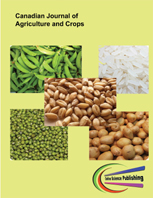Pattern of Tree Abundance on Farms of Smallholders in the Greener Belt of Ethiopia
DOI:
https://doi.org/10.20448/803.4.2.153.172Keywords:
Pattern, Tree, Retention, Abundance, Smallholder, Farm, Ethno-culture, Green, Belt.Abstract
Tree retention on farms has always been practiced by farmers. Today, due to the increasing demand for farmlands, the desire for tree retention on farms is decreasing. Despite sustained culture of tree retention on farms, research and policy have focused on natural forests. This paper was aimed at understanding the pattern of tree abundance on smallholder farms in terms of density, diversity and composition. Trees were recorded on 45 two-hectare farm plots in the year 2016 in the greener belt of Ethiopia. To this end, both radial distance and ethno-culture approaches were employed to understand the pattern. Trees were as diverse as 19 species and 7 families. Species of Terminalia macroptera Guill. & Perr, Terminalia brownii Fresen. and Croton macrostachys, and families of Fabaceae and Combretaceae were the most abundant. Densities of trees and their species were 3.82ha-1 and 2.68ha-1 respectively. Center-outward increasing pattern of tree density across RDs was found. The tree species showed varying pattern of abundance. Trees were more abundant on the farms of the indigenous than the non-indigenous group. In conclusion, the center-outward pattern of tree density across radial distances shows a decline in the level of tree removal from farms. The mixed pattern of tree species abundance shows the differences in farmers’ preference of specific species during tree retention. More tree abundance on farms of indigenous than non-indigenous is consistent with prior expectations and previous literature. Research into, why variations in tree abundance across space and ethno-cultures existed and, species preference is necessary.


